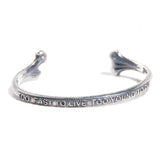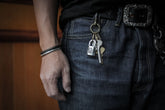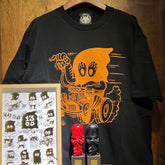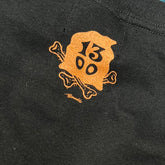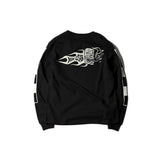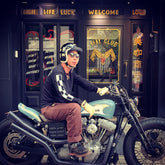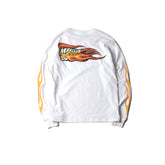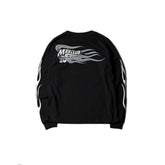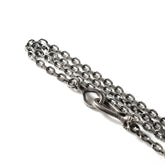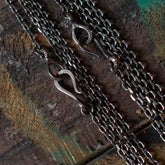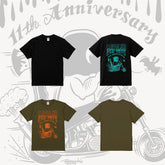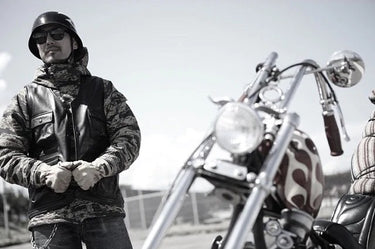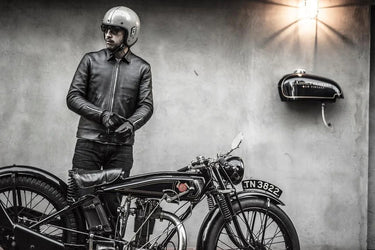TOTENKOPF - The terrifying skeleton knight

Totenkopf is German, and its literal translation is skull. It is usually a totem symbol composed of a skull and two crossed thigh bones.
The Totenkopf, like the Iron Cross, existed long before Nazi Germany. It can be traced back to Germany's predecessor, Frederick II of the Kingdom of Prussia in the 16th century. Frederick the Great, who was known as a military genius, at that time Favored by the fierceness of the Hungarian hussars, a cavalry regiment was also established.

Among them, the 5th Cavalry Regiment is the most famous because of the fur hats it wears with the obvious Totenkopf logo, which embodies the spirit of fearlessness and death. Later, it had outstanding achievements in the Austrian Succession War and the Seven Years' War, making European countries more aware of the Skeleton Army. Have a more profound impression.
At the Battle of Waterloo in 1815, the skeleton hussars arrived at the battlefield at an unexpected speed, broke through the French right-wing front, and successfully defeated the French offensive rhythm. After this battle, the skeleton emblem of the Knights became the most popular in Germany besides the Iron Cross. A revered symbol.

In the Franco-Prussian War of 1871, the Prussian cavalry regiment always played the main role in battlefield superiority and became a major driver of the unification of the German Empire. It was not until World War I that the evolution of machine guns and firearms ended the superiority of cavalry. However, the Fifth Skeleton Cavalry Regiment relied on its prominent reputation and outstanding military exploits to avoid the crisis of disbandment and retired from the front line to become a royal guard establishment.


Kaiser Wilhelm II, his daughter Victoria Louise (Princess Princess of Prussia), and their son-in-law Ernst August III, who became a colonel of the cavalry regiment, all wore traditional skeleton cavalry uniforms.


With the defeat of the Allies in World War I, the abdication of the royal family, and the establishment of the Weimar Republic government, the Skeleton Cavalry finally faced disbandment, but its spirit continued. During this period, you can also see some private or military units such as the Freikorps. Skull image.

However, when the Nazi Party came to power, the symbolic meaning of the skull and crossbones symbol changed. Hitler established three SS (Schutzstaffel, commonly known as SS): the general SS, the armed SS, and the Skull and Bones Corps. The Skull and Bones Corps mainly managed the Nazi concentration camps. As a prisoner of war, because of the ethnic cleansing of the Jews and other evil deeds, negative comments such as bloody cruelty and murderousness gradually replaced the world's original impression of Totenkopf.

Until the end of the war, most members of the Skull and Bones Corps were prosecuted and executed for crimes against humanity, but the skull and crossbones symbol did not survive like the Iron Cross. Totenkopf was completely removed from Germany's honors, but two hundred years of outstanding military exploits and history , but it is an undeniable fact after all.

The Totenkopf, Iron Cross , Swastika and SS logos all make people today intuitively associate them with symbols of Nazi Germany. However, in the eyes of Outlaw Bikers in the 1950s, they were another spiritual symbol of rebellion against the government.
Our good friend, the Japanese tattoo artist Cool Tattooing Masato, went to the United States to study art alone at the age of 19 and was deeply influenced by the motorcycle subculture. His works combine insights from American culture and a unique personal style, especially the depiction of skulls. Even more exquisite, there are even special exhibitions.

In his series of collaborations with Blackboots, you can also see many different types of skull designs. On our anniversary items, thighbone elements are used to express uniqueness. This year’s sixth anniversary pendant is even more special. It is pieced together with Swastika as the body, and the brand name and the words "RIDE" and "LIVE" are printed on the back, which means "LIVE TO RIDE, RIDE TO LIVE"!
It represents MAY CLUB's love for Indian culture, and also has the meaning of a knight who does not compromise with society!

